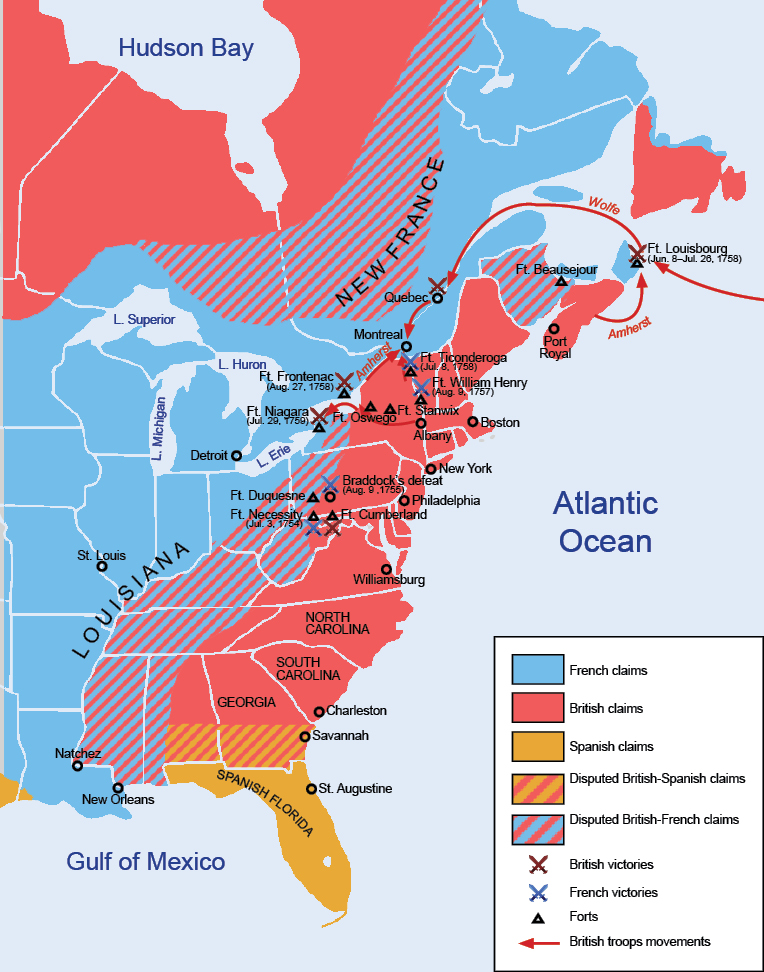
and you made your food - that means you chopped the head off a chicken, or had your slaves do it for you (always hard to handle) And if you were in the wilderness, you had make sure Indians didn't kidnap you.
But technology was happening, as witnessed by the old saw that the British were defeated because they used muskets, wore those bright red jacket, and stood in the open whereas the Rebels dressed in buckskin, used rifles, and always hid behind trees. While there is some truth to, but like most old truisms, there's more benath the surface. Witness Banastre Tarleton- a British General:
Not exactly a Red jacket, eh? And then there's Robert Rogers, along with the Ferguson Rifle And the most important battle of the war, that of Saratoga, was won by the Americans.
Similarly, The border lines between what became the United States and Canada were a little more fluid. Consider the lines at the start of The French and Indain wars, about twenty years before 1778:
The British were limited mostly to the coast, although they were pushing inland, mainly from Virginia, Pennsylvania, and New York. While the land that became the Midwest changed from French to British or Spanish (depending on which side of the Mississippi you were on), the few European Settlement were French: Saint Louis, Sainte Genevieve, Detroit.
And the Settlers kept on pushing west, which made the Native Americans made. A conference was held at Fort Stanwix (modern day Rome, NY) and the line between White and Red men was codified thus:
And that past isn't far behind us. All you have to do is go to a re-enactment event:



